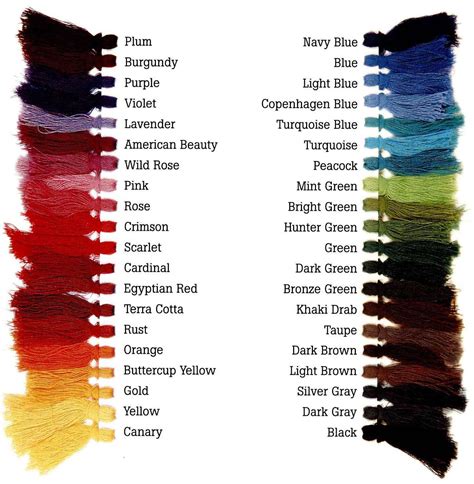Synthetic hair dye has revolutionized the beauty industry, allowing us to transform our locks into vibrant hues. Here are seven key facts to know about this remarkable product:

1. Global Market Worth Billions
The global synthetic hair dye market is valued at a staggering $12.5 billion, with projections indicating a steady growth over the next five years.
2. Ammonia-Free Options Growing in Popularity
In response to concerns about potential hair damage, ammonia-free hair dyes have gained significant traction. These formulations offer a gentler alternative without compromising color intensity.
3. Semi-Permanent vs. Permanent Dye
Semi-permanent hair dyes deposit pigments on the hair’s outer layer, resulting in temporary color that gradually fades. Permanent hair dyes penetrate the hair shaft, providing long-lasting results.
4. Color Trends Driven by Fashion and Celebrities
The popularity of synthetic hair dye colors is heavily influenced by fashion trends and celebrity endorsements. Over the years, shades like blue, purple, and pink have surged in popularity.
5. Endless Color Possibilities
Synthetic hair dye offers an extensive range of colors, from natural blonde to vivid reds and blues. This versatility allows individuals to express their unique personalities through their hair.
6. DIY or Professional Application
While many people opt for DIY hair dyeing, it’s essential to consider the potential risks. Professional stylists have the expertise to ensure optimal results and minimize damage.
7. Research & Development Fosters Innovation
Ongoing research and development in the field of synthetic hair dye are leading to advancements such as improved color retention, reduced fading, and enhanced hair care benefits.
Step 1: Identify Your Needs
Before embarking on your hair dyeing journey, ask yourself the following questions:
- What color(s) do I want?
- How long do I want the color to last?
- Do I have any allergies or skin sensitivities?
Step 2: Choose the Right Dye
- Ammonia-free: For gentler dyeing with shorter-lasting results
- Semi-permanent: For temporary color that fades within a few weeks
- Permanent: For long-lasting color that requires touch-ups every 4-6 weeks
Step 3: Prepare Your Hair
- Wash your hair 1-2 days before dyeing to remove any product buildup.
- Towel-dry your hair and apply a pre-shampoo treatment to protect your scalp.
Step 4: Apply the Dye
- Follow the instructions on the dye kit carefully.
- Apply the dye to your hair evenly, starting from the roots to the ends.
- Leave the dye on for the recommended duration.
Step 5: Rinse and Style
- Rinse your hair thoroughly with cool water until the water runs clear.
- Use color-protecting products to maintain your vibrant hue.
Pros:
- Versatility in color options
- Ability to transform hair color instantly
- Confidence boost and self-expression
- Wide availability at drugstores and salons
Cons:
- Potential for hair damage
- Allergies or skin irritation
- Fading or color change over time
- Cost of professional application
- Maintenance required to maintain color
The realm of synthetic hair dye extends beyond traditional hair coloring into novel applications:
- Fabric Dyeing: Add vibrant hues to clothing, curtains, and other textiles
- Nail Art: Create unique and eye-catching nail designs
- Body Painting: Express your artistic side with temporary body art
- Pet Grooming: Color your furry friend’s hair for a touch of fun and glamour
- Craft Projects: Add a splash of color to papier-mâché, modeling clay, and other craft materials
Table 1: Choosing the Right Hair Dye
| Hair Type | Dye Type | Benefits | Risks |
|---|---|---|---|
| Fine or damaged | Ammonia-free | Gentle on hair | Fades more quickly |
| Normal | Semi-permanent | Temporary color | Requires frequent applications |
| Coarse or resistant | Permanent | Long-lasting color | Can damage hair |
Table 2: Hair Dye Maintenance Tips
| Step | Description | Benefits |
|---|---|---|
| Use color-protecting products | Extend the life of your hair color | Prevent fading and brassiness |
| Avoid overwashing | Hair color can strip away | Maintain moisture and shine |
| Touch-up roots regularly | Keep color looking fresh | Prevent uneven fading |
| Protect hair from heat | Heat styling can damage color | Use heat protectant sprays |
Table 3: Common Hair Dye Mistakes
| Mistake | Consequences | Prevention Tips |
|---|---|---|
| Applying dye to wet hair | Water dilutes dye | Towel-dry hair before dyeing |
| Leaving dye on for too long | Can damage hair | Follow instructions carefully |
| Not prepping hair properly | Color won’t absorb evenly | Wash hair and use a pre-shampoo treatment |
| Mixing different dye brands | Can lead to unexpected results | Stick to one brand for best results |
| Ignoring allergies | Can cause skin reactions | Do a patch test before full application |
Table 4: DIY Hair Dye FAQs
| Question | Answer |
|---|---|
| Can I bleach my hair at home? | Yes, but it requires caution. Use a high-quality bleach kit and follow instructions carefully. |
| How do I fix uneven hair color? | Apply a semi-permanent dye in a shade that complements your desired color. |
| Can I dye my hair multiple colors at once? | Yes, but it’s best to consult with a professional stylist to achieve the best results. |
| How often should I dye my hair? | Touch up roots as needed, typically every 4-6 weeks. Full color changes can be done every 2-3 months. |
| What are the best hair dye brands? | Look for brands known for their quality and reputation, such as L’Oréal, Clairol, and Redken. |
Remember, synthetic hair dye is a powerful tool that can transform your look. By understanding the different options available and following proper application techniques, you can achieve beautiful, vibrant hair color that enhances your confidence and self-expression.
